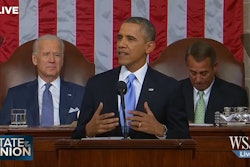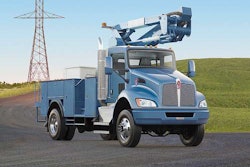The trucking industry can expect another round of emissions regulations, courtesy a second-term climate change initiative from President Barack Obama. Truck makers, who worked with the White House on the original heavy-duty vehicle plan, say they support the effort to improve fuel economy — but any new standards must make economic sense for truck owners.
Tucked into a speech outlining the administration’s Climate Action Plan, which focuses on stationary sources of greenhouse gases (GHG) such as fossil-fueled power plants, the president also addressed energy conservation.
“The fuel standards we set over the past few years mean that by the middle of the next decade, the cars and trucks we buy will go twice as far on a gallon of gas. That means you’ll have to fill up half as often; we’ll all reduce carbon pollution,” he said Tuesday. “And we built on that success by setting the first-ever standards for heavy-duty trucks and buses and vans. And in the coming months, we’ll partner with truck makers to do it again for the next generation of vehicles.”
Though the president’s remarks regarding transportation were brief, the impact could be far-reaching: The trucking industry is still phasing in those original heavy-duty fuel efficiency standards, set by the Obama administration in 2011. And even though truck and engine makers began announcing EPA certification for 2014 equipment as early as last year, the model-year 2018 GHG standards are more comprehensive and challenging.
Unlike automobile fuel efficiency standards, the truck measure does not set a miles-per-gallon target, given the multiple categories and different types of vehicles, along with the multitude of applications for which the heavy-duty vehicles are designed and built.
Still, the initial heavy-duty standards will reduce greenhouse gas emissions by approximately 270 million metric tons and save 530 million barrels of oil worth more than $50 billion, according to the White House. The new climate plan also notes that heavy-duty vehicles are currently the second largest source of greenhouse gas emissions within the transportation sector.
The president’s proposal comes on the heels of a report by the Diesel Technology Forum that one-in-four trucks on the road are now equipped with 2007 or later emissions mitigation technology and output almost no particulate matter.









